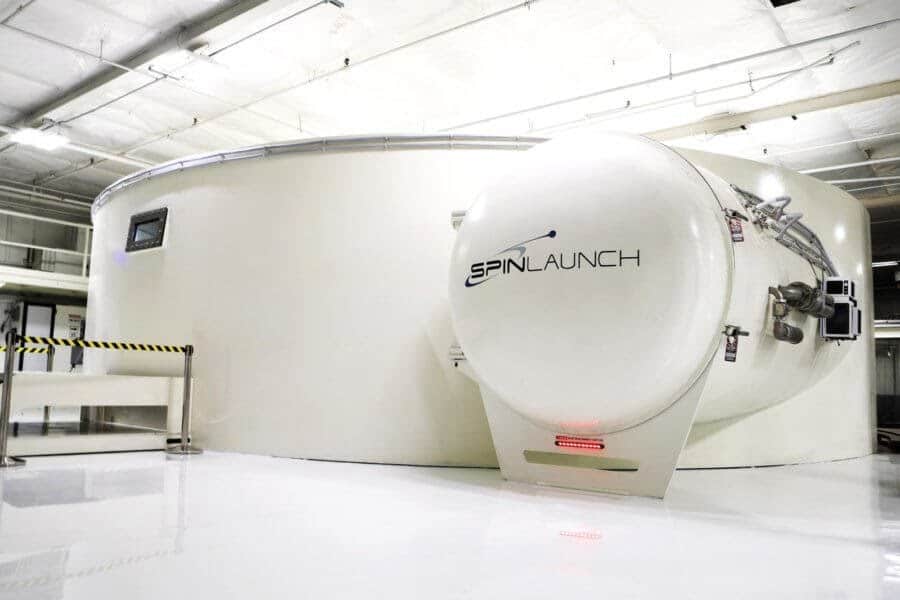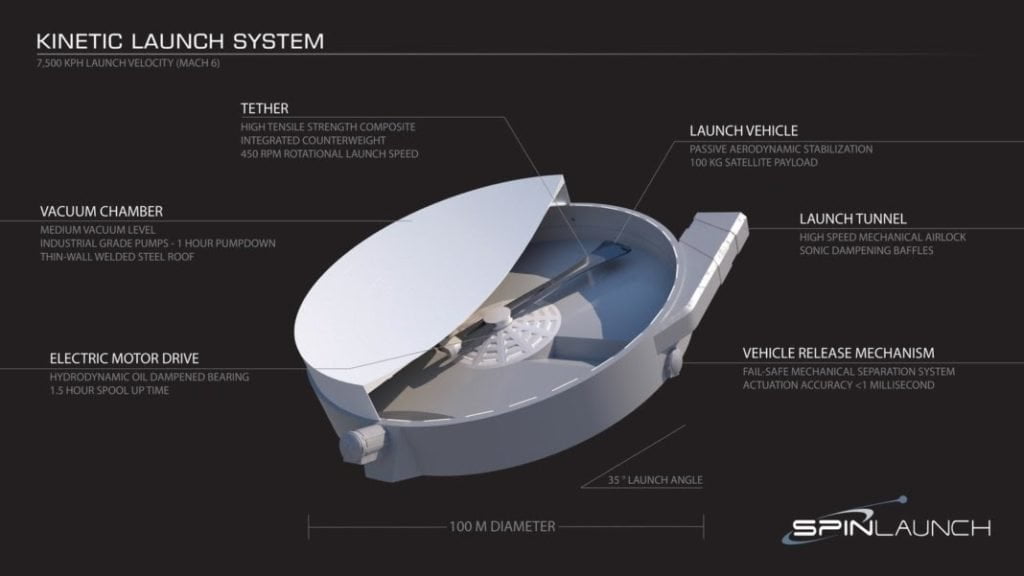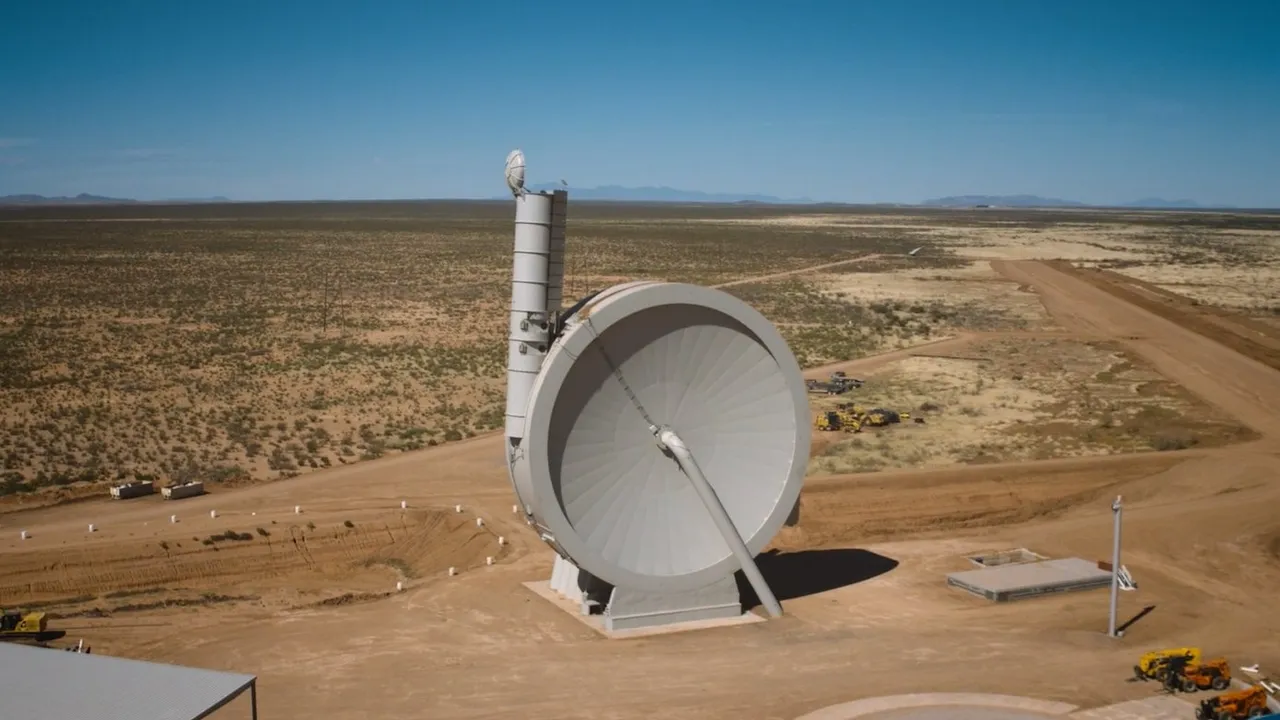The collapse of costs to enter orbit has stimulated a boom in the space sector, giving rise to a real race for increasingly effective, profitable and economical applications. A secretive startup now plans to cut the cost to just 250.000 euros per launch by “throwing” rockets into space rather than launching it with a propellant.
In the last decade, the pioneering work of Space X has shown that putting things into orbit may not be so expensive, and that there are viable business opportunities in the private space sector. In combination with advances in satellite technology, there is now a thriving market for small and inexpensive spacecraft in low Earth orbit that do everything from remote sensing to providing broadband Internet access. And now Spinlaunch arrives.
Going into orbit still costs a million euros
Costs are falling dramatically, it was said, but the cheapest option to reach Earth orbit (a ride on Space X's Falcon 9) still costs 1 million euros. And launches only happen twice a month at best. The Californian startup SpinLaunch says that its technology will allow up to five launches per day for a price of 250.000 euros. A quarter of the cost, 148 more launches per month.
Spinlaunch has operated almost secretly since its founding in 2014, but last month made Wired USA take a peek at its ambitious plans. The idea is to build a centrifuge the size of a football field that will spin a rocket until it reaches one kilometer per hour and then leave it in the void. The mechanism is the same as the basis of the weight throw, to understand each other.

To date the company has built a prototype of about 12 meters in diameter that managed to carry a 5kg "projectile" to 6500km per hour, but is now in the process of building one three times larger at Spaceport America in New Mexico. Spinlaunch hopes to launch 50kg test vehicles on suborbital flights by the end of this year.
How the centrifuge works
The centrifuge, the "launching" device used by Spinlaunch, consists of an electric motor that rotates a long Kevlar and carbon fiber arm. A launch vehicle is attached at one end with a counterweight on the other side and is rotated in a partial vacuum to avoid air resistance.
The centrifuge slowly increases the speed for a few hours, and when it is at maximum speed the rocket is released and a special lock is released for the time necessary to make it fly out of the launch tube.

Can speed be enough to launch a rocket into orbit?
I'll be brief: no. Even if high, this speed will not be sufficient to send a rocket into orbit, so the latter will have small engines that will fire at 60.000 meters above sea level. The air at this altitude is so thin that it requires only a minute to burn, dramatically reducing your fuel bill.
SpinLaunch has already built a 7,5-meter test model of the launch vehicle, which will be able to carry a 90kg satellite.
The company has raised $80 million from some notable backers, including Airbus and Alphabet. It also won a contract from the US Department of Defense under a program to develop the ability to launch satellites at very short notice.
And now my famous doubts
Not surprisingly, however, there is considerable skepticism. Many engineers raised doubts that rockets and satellites would be able to withstand the incredible g forces (10.000 times stronger than gravity) they would be subjected to in the centrifuge.
Others have suggested that upon release of the rocket the transition from the vacuum of the centrifuge to the much denser atmosphere might be like hitting a wall.
The founder and CEO Jonathan Yaney he said he tested all types of components in the centrifuge, including radios, batteries, GPS modules and even an iPhone, and they all survived.
He admitted that the launch vehicle will be more like a missile than a rocket and some components may need to be "hardened", but overall the system works.
There is still a long way to go, however, and in the meantime there are many other players trying to play this match. The price of Space X releases continues to drop, RocketLab already offers dedicated missions for small satellites. Startup Astra also aims to launch items for “only” 2,5 million daily and that price could still drop. Did I tell you about Virgin Orbit's Launcher One? And what about Firefly's Alfa and Ariane Group's Vega C rocket? What about the Small India satellite launch vehicle, which could debut this year?


